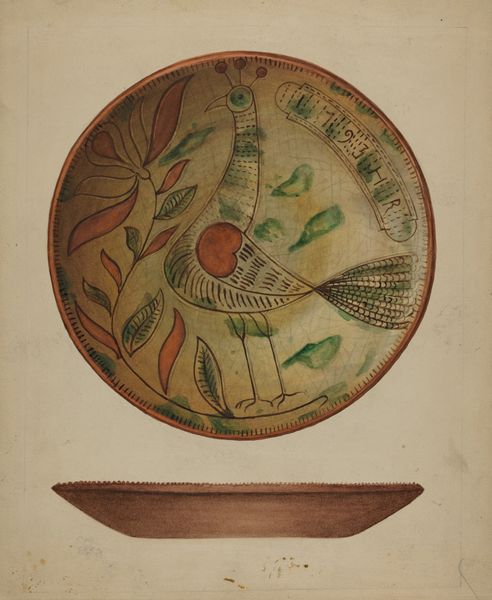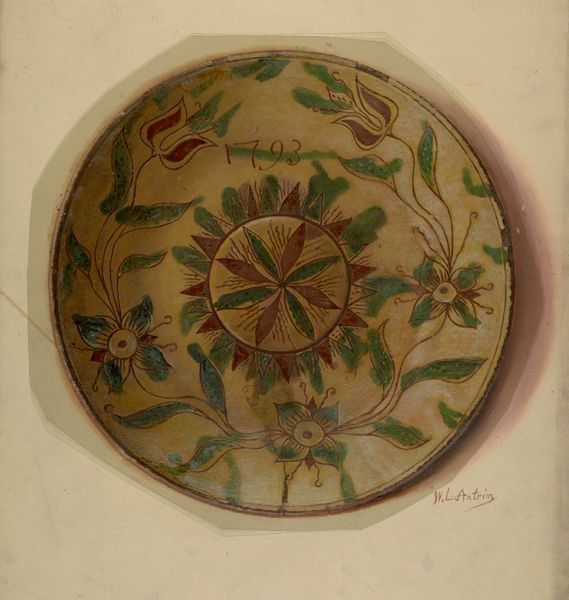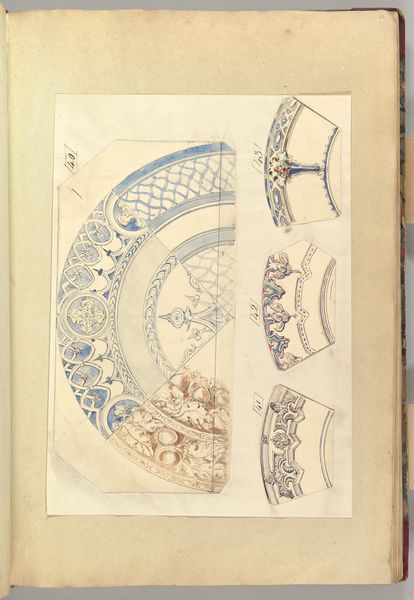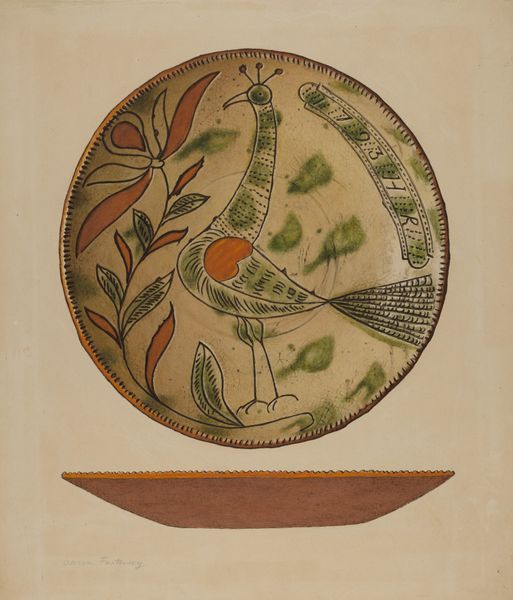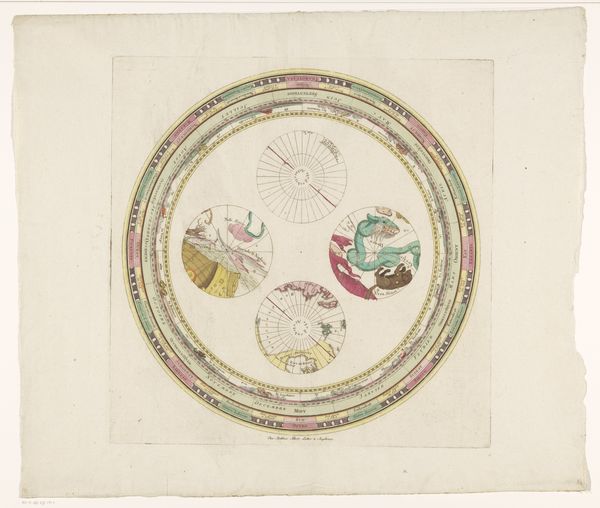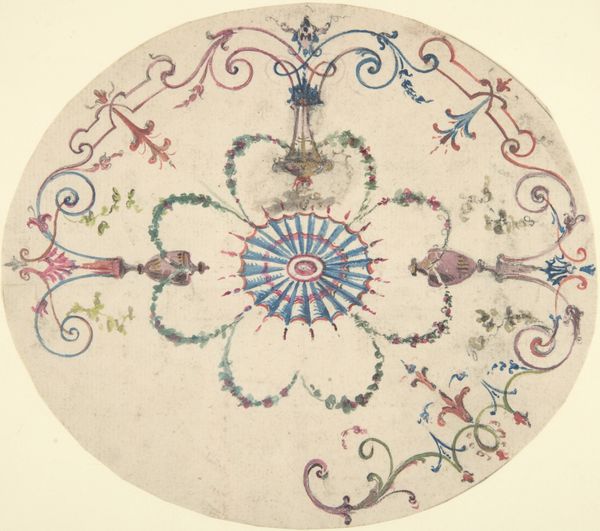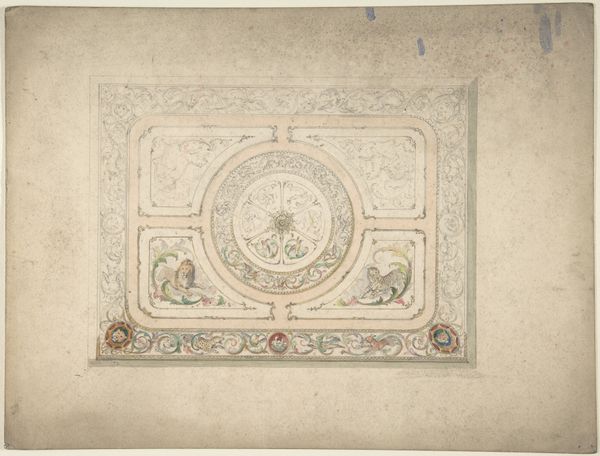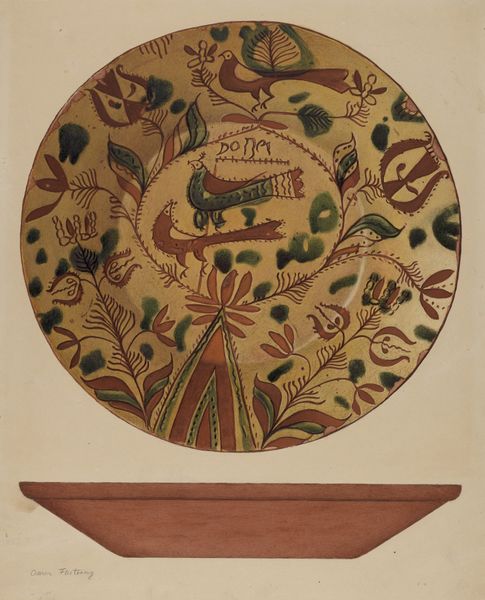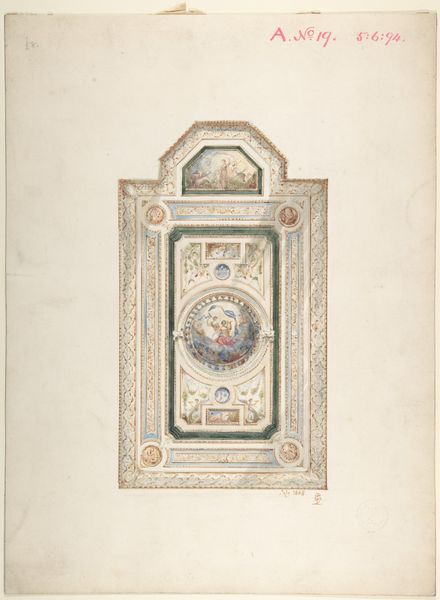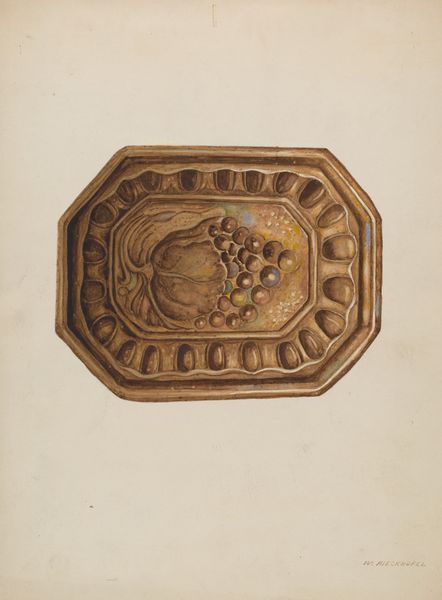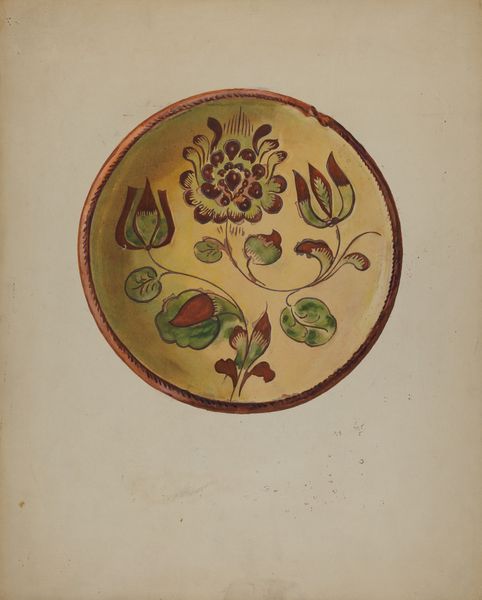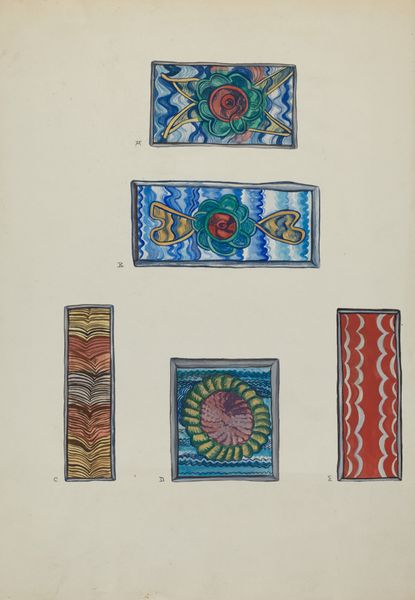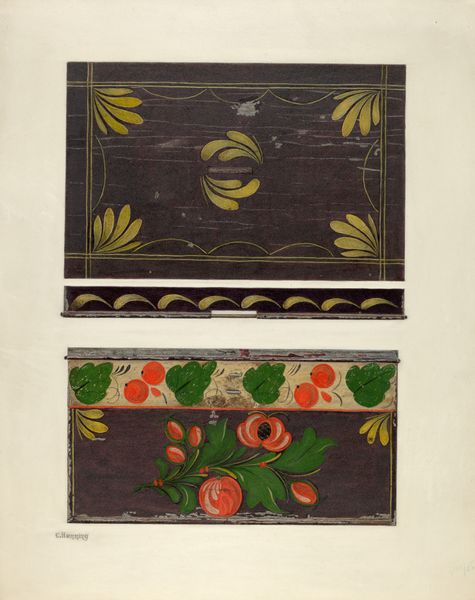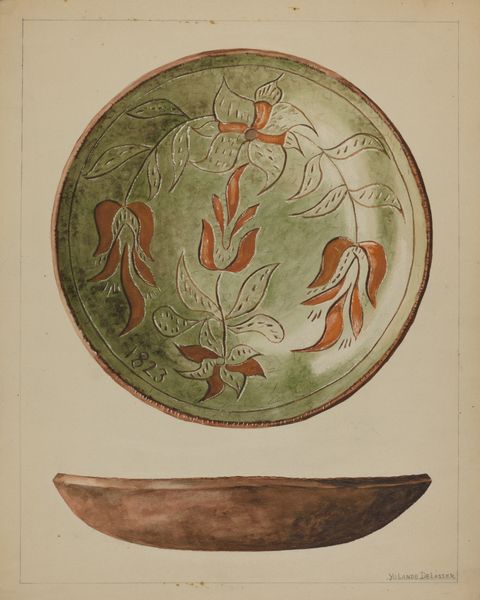
Design for a Covered Dish in the "Service au Filet" (Fish Net Ware), Maison J. Vieillard et Cie, Bordeaux 1875 - 1885
0:00
0:00
drawing, mixed-media, print, ceramic, watercolor
#
drawing
#
mixed-media
#
water colours
# print
#
arts-&-crafts-movement
#
ceramic
#
watercolor
#
coloured pencil
#
ceramic
#
mixed media
#
watercolor
Dimensions: 26 7/8 x 20 in. (68.3 x 50.8 cm)
Copyright: Public Domain
Curator: This drawing presents a design for a covered dish, part of the "Service au Filet," conceived by Maison J. Vieillard et Cie in Bordeaux, sometime between 1875 and 1885. Editor: My initial impression is that it's airy and delicate, despite depicting a functional ceramic object. The overarching grid pattern is unusual, creating almost a sense of looking at the dish through water. Curator: That grid is the "filet," or net, lending the service its name. It’s fascinating how they’ve translated a functional element – a fishnet – into an aesthetic one. Consider the material processes required: transferring this delicate watercolour design onto ceramic, maintaining the precision of the net while allowing for the fluidity of the painted details… it's a complex interplay between industrial production and artistic vision. Editor: Absolutely. The water lilies and the goldfish introduce symbolic layers. Goldfish, in many cultures, represent prosperity and good fortune, while water lilies often symbolize purity and rebirth. It creates an intriguing contrast to the industrial nature you’ve highlighted. Does this suggest aspirations of the patron, blending the everyday with deeper symbolic meanings? Curator: Precisely! It speaks to the Arts and Crafts movement’s ambition to elevate everyday objects, imbuing them with artistry and meaning, pushing against mass production without entirely abandoning it. This dish is meant for use, for display, and for conveying social and cultural values. The mixed media approach – watercolor, colored pencil – hints at the labour involved in visualizing this object and the multiple stages in ceramic manufacture itself. Editor: The careful placement of these motifs under that "filet" evokes, perhaps unconsciously, a feeling of capturing these positive attributes, holding onto luck and purity within the domestic sphere. A beautiful encapsulation of its time. Curator: Yes, looking at it, you grasp the tension of its era and the way the piece itself negotiates craft versus industry. Editor: It's an intriguing reflection, indeed.
Comments
No comments
Be the first to comment and join the conversation on the ultimate creative platform.
